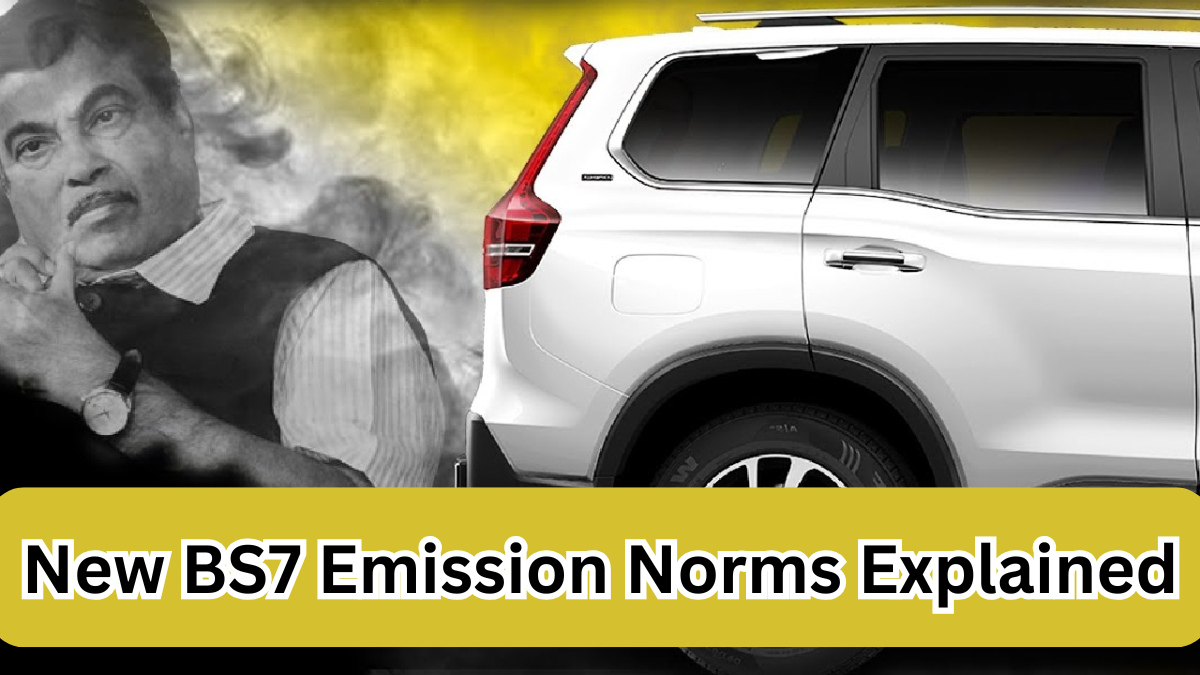India’s automobile industry is heading into another transformative phase with the expected implementation of BS7 emission norms India 2025. As the country continues to push for cleaner mobility solutions, buyers and carmakers alike are preparing for the shift.
If you’re planning to buy a car in 2025 or beyond, here’s everything you should know about what the transition from BS6 to BS7 means for you.

What Are BS7 Emission Norms?
BS (Bharat Stage) norms are India’s emission standards designed to regulate the output of air pollutants from internal combustion engines. These standards are aligned with European regulations and are updated periodically to meet growing environmental concerns.
With the BS7 emission norms India 2025, the government aims to impose stricter limits on:
-
Nitrogen Oxide (NOx)
-
Hydrocarbons (HC)
-
Carbon Monoxide (CO)
-
Particulate Matter (PM)
The introduction of BS7 norms is part of a larger plan to reduce pollution, enhance engine efficiency, and prepare the Indian market for future automotive technologies.
BS6 vs BS7 Cars: Key Differences
A common question among prospective buyers is: BS6 vs BS7 cars — what’s the real difference?
Here’s a simple table outlining how BS7 norms will differ from BS6:
| Feature | BS6 Cars | BS7 Cars (Expected) |
|---|---|---|
| Emission Control Tech | Selective Catalytic Reduction (SCR), DPF | Advanced after-treatment systems |
| CO2 & NOx Emissions | Regulated but lenient | Significantly reduced |
| Real Driving Emissions (RDE) | Optional in many segments | Expected to be mandatory |
| On-Board Diagnostics | Basic (OBD-I) | Advanced (OBD-II with real-time alerts) |
| Vehicle Price Impact | Moderate | Likely 5–10% higher |
In summary, BS6 vs BS7 cars comparisons suggest that while BS7 vehicles will be cleaner and more efficient, they’ll also come with a higher price tag due to advanced emission technologies.
Why the Shift to BS7?
India’s move toward BS7 emission norms in 2025 is driven by several critical factors:
-
Rising levels of air pollution in urban areas
-
The need to meet global climate commitments
-
Technological advancements in engine and fuel systems
-
Increasing health concerns due to vehicular emissions
How Will This Impact Indian Car Buyers?
If you’re in the market for a new vehicle in 2025, here’s how these emission updates in India might affect you:
1. Higher Purchase Costs
-
BS7-compliant cars are expected to be more expensive due to the inclusion of newer technologies like advanced sensors and after-treatment systems.
-
Price increases may range from ₹50,000 to ₹1 lakh, depending on the vehicle category.
2. Increased Maintenance Costs
-
New components like upgraded diesel particulate filters (DPFs) or real-time emission monitors may require specialized servicing.
-
Spare parts could also be more expensive.
3. Better Engine Efficiency
-
Vehicles will likely run cleaner and more smoothly with improved combustion technologies.
-
Some car models may also see enhanced fuel efficiency.
4. Impact on Resale Value
-
BS6 cars might face depreciation in value post-2025.
-
BS7 vehicles are expected to hold their value longer due to future-proof compliance.
What Should Buyers Do in 2025?
Here’s a quick decision matrix to help you assess your options:
| Situation | Recommended Action |
|---|---|
| Buying a car before mid-2025 | Opt for BS6 (especially if on a tight budget) |
| Planning a long-term vehicle purchase | Wait for BS7-compliant models |
| Considering a hybrid or EV | Electric vehicles already meet or exceed emission norms |
| Selling a BS6 vehicle | Try to sell before BS7 rollout for better resale value |
Final Thoughts
The upcoming BS7 emission norms India 2025 mark a major shift in India’s automotive policy. While the transition will bring cleaner vehicles and reduce environmental impact, it also means higher upfront and maintenance costs for buyers.
As emission updates in India continue to evolve, understanding the impact of new regulations like BS7 is essential. Whether you’re looking to upgrade or invest in a new car, knowing where the industry is headed will help you make smarter choices.
FAQs:
1. When are BS7 norms expected to be implemented in India?
The BS7 norms are expected to come into effect in late 2025 or early 2026, though the final rollout date is yet to be confirmed by the government.
2. Will BS6 cars still be allowed on the road after BS7 is introduced?
Yes. BS6 vehicles will remain legal to use. However, manufacturers may gradually phase them out in favor of BS7-compliant models.
3. Are BS7 emission norms only for diesel vehicles?
No. BS7 standards will apply to both petrol and diesel vehicles, and possibly hybrid and alternative fuel vehicles as well.
4. Will car prices increase with BS7 norms?
Yes. Due to the inclusion of advanced emission technologies and real-time monitoring systems, BS7 vehicles are expected to be 5–10% more expensive than BS6 counterparts.
Click here to learn more
